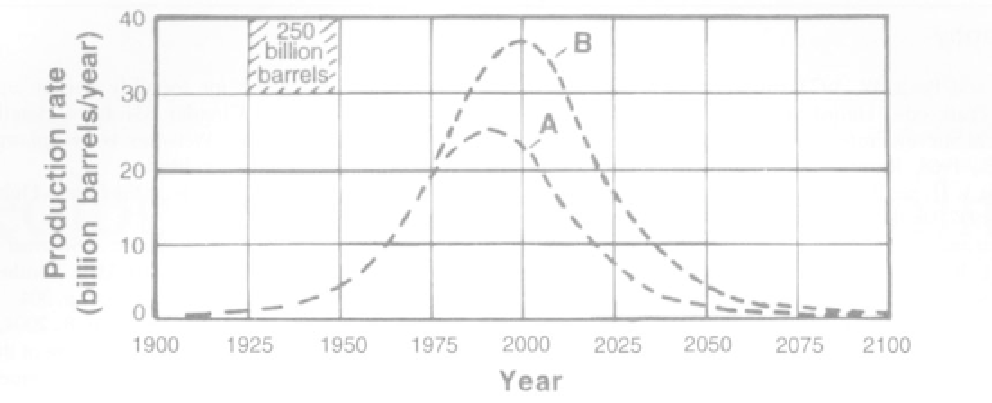Geology Reference
In-Depth Information
FIGURE IV.2
Cycle of world crude-oil production at assumed total resources of: A, 1,350 billion barrels,
and B, 2,100 billion barrels (modified from Hubbert, 1969). Total world crude-oil production in 2001:
77 million bpd; forecast for 2020: 112 million bpd. In 2000, the U.S.A used 19.7 million bpd; forecast for
2020 is 26.7 million bpd.
2. Name one renewable and one nonrenewable geologic
resource.
8.
Hubbert, in 1956, forecast the peak in U.S. oil production
would occur in 1970 and it did. Assuming the total world oil
resource is 2,100 billion barrels, when should we peak in
world oil production, according to Hubbert (Figure IV.2)?
3. If you knew the current rate of production of a mineral
resource from a mine, what additional information would
you need to determine the remaining lifetime of the mine
(number of years until it is exhausted)?
9. In Figure IV.2, the production rate is given in billion bar-
rels per year. If we were producing a steady 5 billion barrels
per year, how much would we use in 25 years?
4.
According to Brobst and Pratt (Figure IV.l), what is the dif-
ference^) between hypothetical and speculative mineral
resources?
In Figure IV.2, outline (and shade in with pencil) that
amount in one of the rectangles.
5.
Would a mining company be likely to extract conditional
resources? Explain.
10.
Using the literature or other sources, determine the
current daily and annual rates of oil production for the
world.
6.
If you owned a gold mine that could produce gold at a
profit only if the price were equal to or greater than
$800/ounce, what would happen to your reserves if the
price went to $600 per ounce?
11.
What impact will "peak oil" have on the U.S.A.?
7. What are the five Cornucopian Premises, according to
Preston Cloud?

